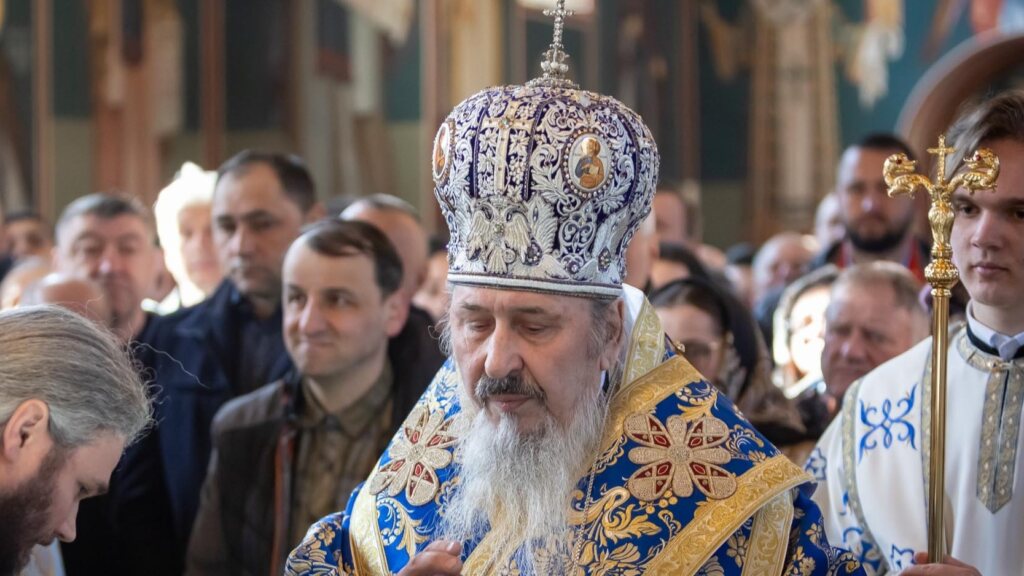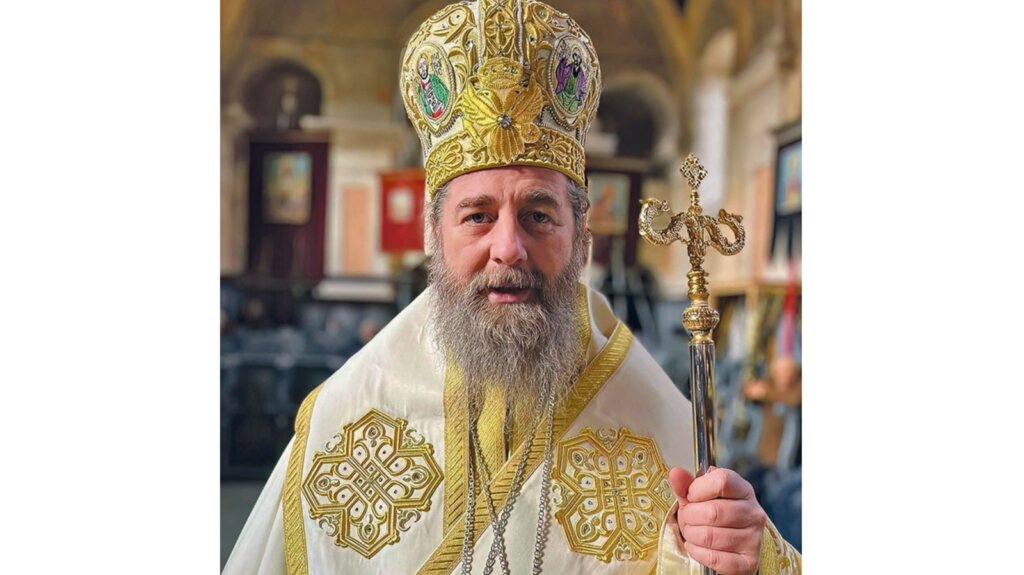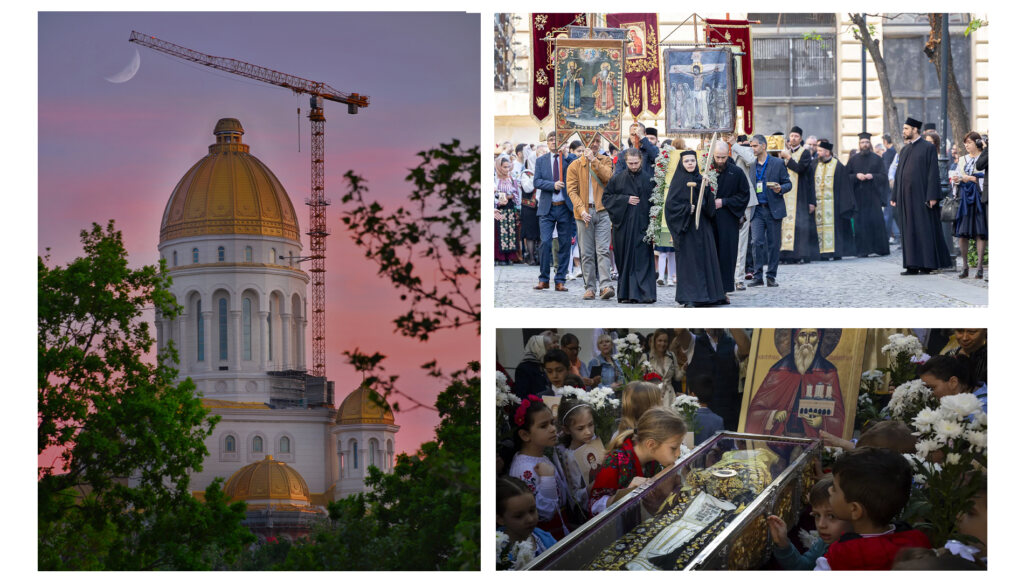The Nativity of the Holy Forerunner and Baptist of the Lord, John
The Gospel (Luke. 1: 5) relates that the righteous parents of Saint John the Baptist, the Priest Zachariah and Elizabeth (September 5), lived in the ancient city of Hebron.
They reached old age without having children, since Elizabeth was barren. Once, Saint Zachariah was serving in the Temple at Jerusalem and saw the Archangel Gabriel, standing on the right side of the altar of incense. He predicted that Saint Zachariah would father a son, who would announce the Savior, the Messiah, awaited by the Old Testament Church.
Zachariah was troubled, and fear fell upon him. He had doubts that in old age it was possible to have a son, and he asked for a sign. It was given to him, and it was also a chastisement for his unbelief. Zachariah was struck speechless until the time of the fulfillment of the archangel’s words.
Saint Elizabeth came to be with child, and fearing derision at being pregnant so late in life, she kept it secret for five months. Then her relative, the Virgin Mary, came to share with her Her own joy. Elizabeth, “filled with the Holy Spirit,” was the first to greet the Virgin Mary as the Mother of God. Saint John leaped in his mother’s womb at the visit of the Most Holy Virgin Mary and the Son of God incarnate within Her.
Soon Saint Elizabeth gave birth to a son, and all the relatives and acquaintances rejoiced together with her. On the eighth day, in accordance with the Law of Moses, he was circumcised and was called John. Everyone was amazed, since no one in the family had this name.
When they asked Saint Zachariah about this, he motioned for a tablet and wrote on it: “His name is John.” Immediately his tongue was loosed, and Saint Zachariah glorified God. He also prophesied about the Coming into the world of the Messiah, and of his own son John, the Forerunner of the Lord (Luke. 1: 68-79).
After the Nativity of our Lord Jesus Christ and the worship of the shepherds and the Magi, wicked king Herod gave orders to kill all male infants. Hearing about this, Saint Elizabeth fled into the wilderness and hid in a cave.
Saint Zachariah was at Jerusalem and was doing his priestly service in the Temple. Herod sent soldiers to him to find out the abode of the infant John and his mother. Zachariah answered that their whereabouts were unknown to him, and he was killed right there in the Temple.
Righteous Elizabeth continued to live in the wilderness with her son and she died there. The child John, protected by an angel, dwelt in the wilderness until the time when he came preaching repentance, and was accounted worthy to baptize the Lord.
Troparion — Tone 4
Prophet and Forerunner of the coming of Christ, / although we cannot praise you worthily, / we honor you in love at your nativity, / for by it you ended your father’s silence and your mother’s barrenness, / proclaiming to the world the incarnation of the Son of God!
Translation of the relics of Holy Great Martyr John the New of Suceava
The saint was martyred in the fourteenth century at Belgorod at the mouth of Dniester River (former Turkish city of Akkerman, or Cetatea Albă – „The White City” in Romanian).
Moldavian Prince Alexander the Good, who ruled over Moldavia and Bessarabia up to the Black Sea shore, brought his relics to the city of Suceava, where his court resided, on June 24, 1402.
In 1685 the Relics of St. John were taken by the Polish King Jan Sobieski to Stryy in Ukraine. They were later transferred to the Basilian Monastery in Zhovkva, also in Halychyna. The Austrian Emperor Joseph II returned them to Suceava in 1783.
The Monastery that bears his name was the site of huge pilgrimages on the day of commemorating his martyrdom. Many people came from Bukovina.
Troparion – Tone 4
You governed your life well on earth, working charity and incessantly praying with tears, you who suffered contests with courage, rebuking the Persian unbelief. Therefore you made yourself strong for the Church and are the boast for the Christians, O John, you shall ever be remembered.
For the life of the saint please read here.
St. Nicetas of Remesiana
Nicetas (c. 335–414) was Bishop of Remesiana, (present-day Bela Palanka, Serbia), which was then in the Roman province of Dacia Mediterranea.
He brought the Gospel to the South and the North of Danube River. He is presumed to be the missionary to the barbarian Thracian tribe of the Bessi, but also to the Goths and the Huns.
Nicetas reputedly composed a number of liturgical hymns, among which some twentieth-century scholars number the major Latin Christian hymn of praise, Te Deum.
Troparion — Tone 4
By sharing in the ways of the Apostles, / you became a successor to their throne. / Through the practice of virtue, you found the way to divine contemplation, O inspired one of God; / by teaching the word of truth without error, you defended the Faith, / even to the shedding of your blood. / Hieromartyr Niketas, entreat Christ God to save our souls.
Tr by oca.org






